Entretien avec
Jimmy Williams
Existe aussi en Version Française
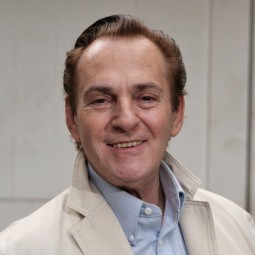
Along with our interviews with Bill Mills and Tommy Bull, this interview is one of the three we made to learn more about the making of Shadow of the Dragon. A crazy movie on which Jimmy Williams was director, producer, lead actor, writer, editor, cinematographer, art director and stuntman...! Jimmy started his career in the film industry as an extra on some big productions (Paul Schrader's Blue Collar, Martin Scorsese's Raging Bull or Sam Peckinpah's Osterman Weekend). Then, he got small parts but exclusively in B-movies (the super lame Ricky 1, spoofing Rocky and shot down by James « AVGN » Rolfe, Surgikill from the very looney Andy Milligan, Samurai Cop and Killing American Style from Amir Shervan, Champagne and Bullets and no less than 7 movies directed by Fred Olen Ray). Jimmy eventually had to direct his very own movie to get his first big role.
Interview conducted on April the 15th of 2015 by John Nada.
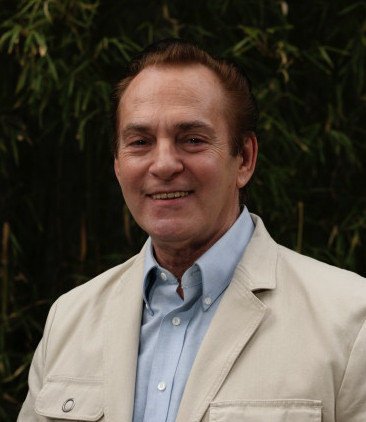
To get started, could you tell us a bit about yourself?
I was born in West Orange, New Jersey, a looong time ago. In fact I've been working in the show business for more than 60 years now! So it's been a while...
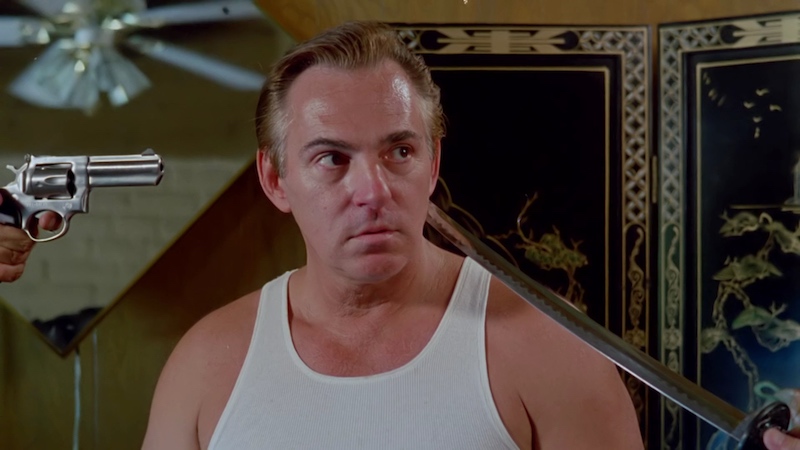 Jimmy « never without my tank top » Williams, in a bad situation in "Samurai Cop" (1991).
Jimmy « never without my tank top » Williams, in a bad situation in "Samurai Cop" (1991).
We heard you were part of the Venice Beach body-building community, is that right?
Yes and no. I was from New York, so out of Muscle Beach. We were ranked in the New York/New Jersey area. I was elected Mr New Jersey, I think it was in 1972, I was 3rd place in Mr America (my class), 3rd place in Mr North America (my class), and many little titles, Mr Fountain of Youth, Mr Orange Valley, this and that and a few other things. But to be honest, I didn’t exercise to have big muscles, I did it just to stay alive.
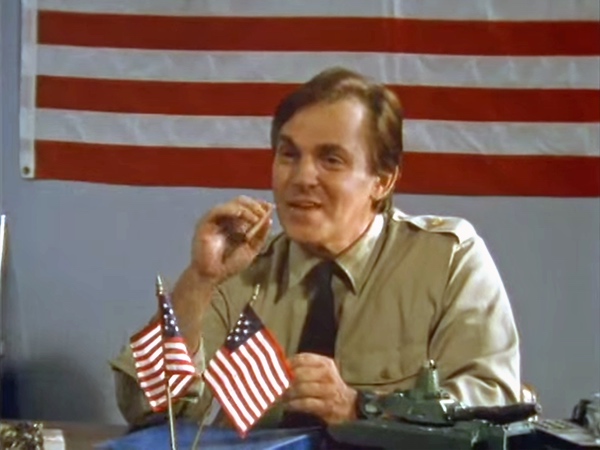
Jimmy Williams in "Cybernator" (1991), a very cheap Terminator rip-off distributed by Troma.
We also heard you worked as a photographer before working in the movies?
Yes. I started as the Muscle & Fitness’ trainee, then I was physique photographer. I took photos for Joe Weider [Nanarland: co-founder of the International Federation of BodyBuilders and creator of the Mr. Olympia contest], for New York people, Bob Hoffman of York Barbell – both his « Muscular Development » mag and « Strength and Health » mag – for the Canadian publisher Robert Kennedy [Nanarland: who founded MuscleMag International and wrote dozens of books], for Iron Man magazines. I took photos and wrote articles, both, and met many people. I knew Ed Fury, I knew Steve Reeves very well, Gordon Mitchell whom I admired a lot…
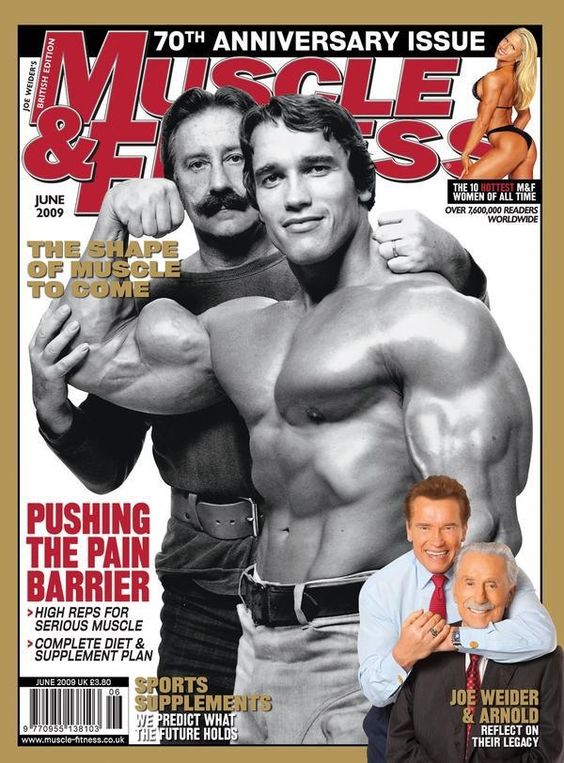
Joe Weider, whom Arnold Schwarzenegger considered his mentor.
…and Richard Harrison?
You know, the funny thing is I was in a picture with Richard, it was one of Fred Olen Ray’s pictures… [Nanarland: Terminal Force, released in 1989]
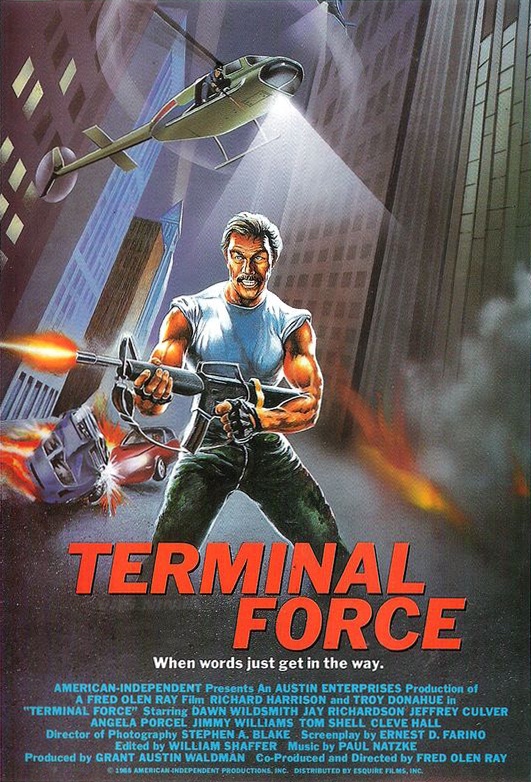
Could you tell as a bit about Shadow of the Dragon?
It took three years and cost 330 000$ to make that. The reason it took so long is because we shot it on 35mm, which was very costly. Back then, it was 50 cents a foot to shoot on 35mm, and 50 cents a foot to get it processed, so one buck a foot. One foot is 0.66 second, so when we did 10 minutes of shooting, that took about 1000 feet of film and cost 1000$. That’s how expensive it was. So whenever we’d get a few bucks, we’d buy a few cans of film, shoot it up… and then we had to wait till we could find enough money to go on. While movie makers nowadays, they’re shooting on video…
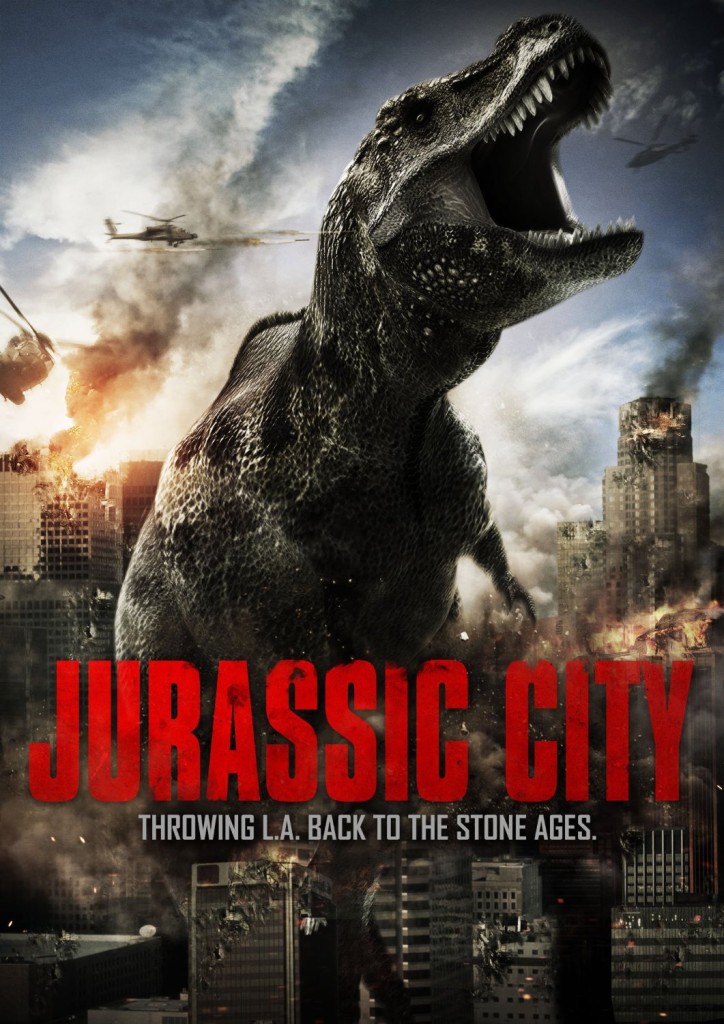
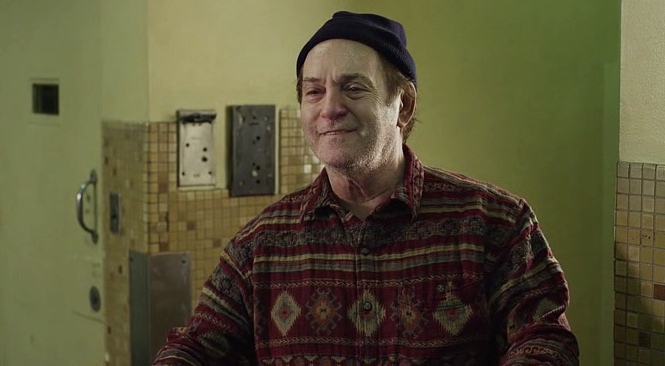
Jimmy, associate producer and actor in the mockbuster "Jurassic City" (2015).
Shadow of the Dragon was released on both VHS and DVD here in France, but I couldn't find any trace of a theatrical or video release in the US or elsewhere. What happened to this movie?
Shadow of the Dragon was never released in the US. But it was released around the world. I had made a deal with a distribution company, and they had it for a couple of years. They did over a million dollars its first year. I never saw a dime of that money. That’s creative accounting. The way it worked, every quarter - every 3 months - they send to the producer a statement of what the picture did business wise and anything else, but that became very creative because every quarter, no matter what the picture did, the expenses were always a little bit higher. So that was their excuse, to keep doing that, and then it took me a 5 year bailout in court to get the rights to my own picture back!

Jimmy in a tank top (sort of his trademark) in John De Hart & James Paradise’s "Champagne and Bullets" a.k.a. "Road to Revenge" a.k.a. "Get Even" (1993).
We couldn't find any trace of a theatrical or video release of Manosaurus (1994) and The Education of a Vampire (2001) either: is there any way to watch them?
OK, I’ll give you back on both of them... Once Manosaurus was shot and the negative was being cut, the editor was working in one of my studios and he couldn’t find a whole bunch of footage, and so we kept checking back and forth in the lab, and apparently they had moved some of the source, and they actually lost a third of our negative. So that one was just put on the back shelf. One of those days, now the technology is so much better, I’ve been thinking about taking the work footage and clean it. You know, a work print is what you’re editing your movie from, and so it really is messed up a lot. And back when that happened, if you wanted to clean it, you had to go on Photoshop and you literally had to do one frame at a time, getting rid of scratches and whatever, but now you can actually do one frame and tell the computer to do the same operation on the next frames, it becomes a viable thing. I gotta talk to Edward Sanchez who was really my partner on that, and see what he wants to do.
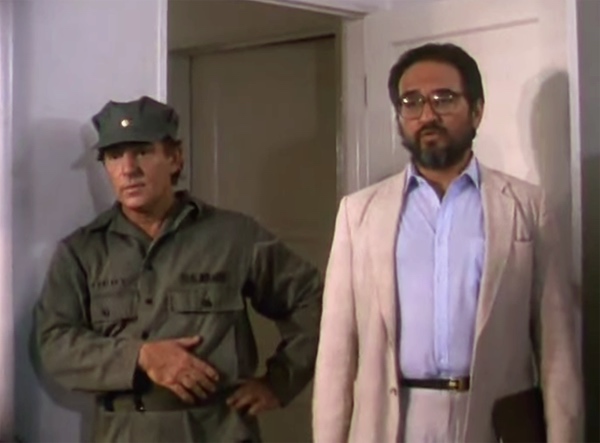
Jimmy Williams and Edward Sanchez in "Cybernator" (1991).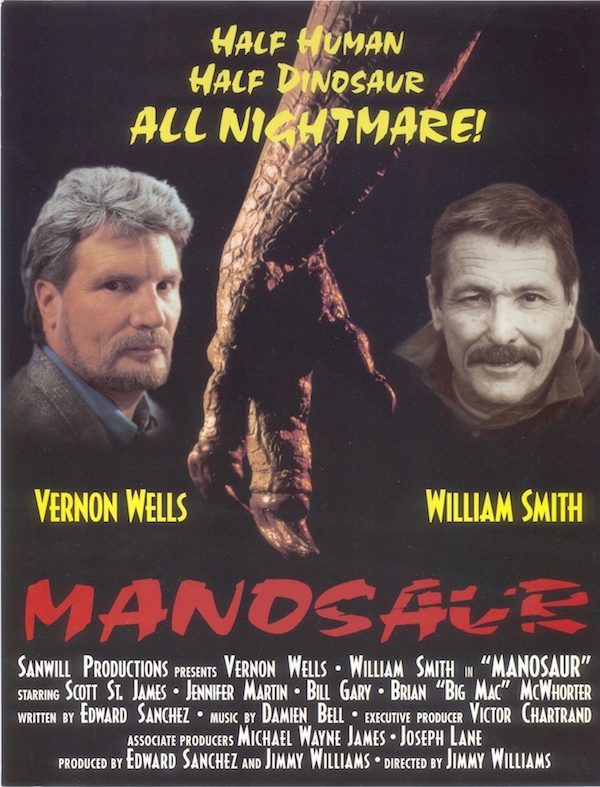
Behold a World Exclusive for Nanarland: the original movie poster for "Manosaur" a.k.a. "Manosaurus"! It was sent to us by Edward Sanchez, along with a few photos with Vernon Wells and William Smith taken during the shooting. Unfortunately, Ed Sanchez also told us that over the years, the work footage itself got deteriorated so much it could no longer be restored, and the movie was alas to be considered lost.
Now The Education of a Vampire, which is Tommy Kirk’s last movie. The material is timeless, it’s a cute story about a Russian soldier which comes home from fighting Napoleon, and they’re having a celebration in his home, and though he was well warned not to go out in the night on his way home he runs into a vampire, gets bitten, and gets immediately put in the ground by its tearful family, and when he wakes up it’s 2012 Los Angeles. And then starts his education of what it’s like to be a vampire, and he doesn’t like it. It’s a cute little story. I own it, it’s still for selling here. But there’s a couple of things that I have to do. When we shot that, I wasn’t really in the wardrobe business like I am today – and so I didn’t know a few things, or didn’t think of them. One of our character plays the security guard at the museum, and the uniform that we used actually had the patches on the sleeve of a real security company. We can’t release the movie like that, so we have to have an editor sit down and remove that from the sleeve, which there again they can do now. And I also wanted to retreat the soundtrack, and things like that.
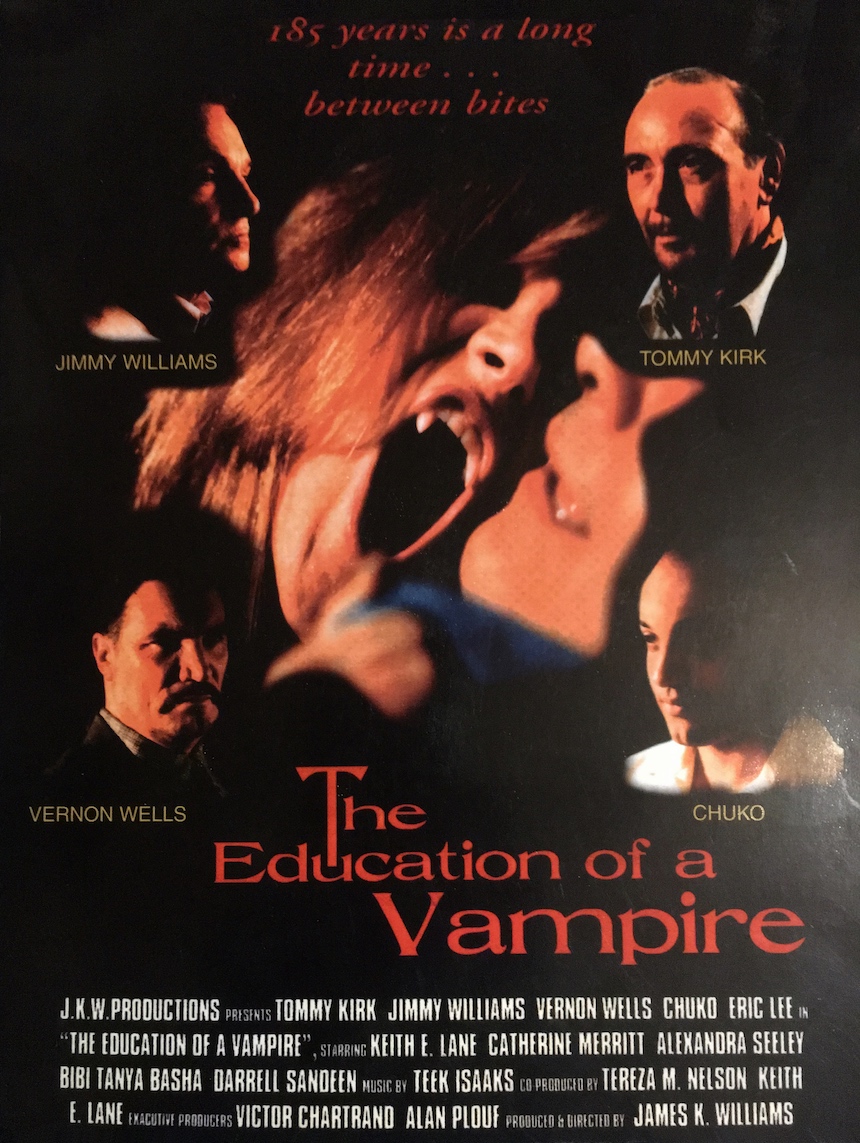
Shadow of the Dragon, Manosaurus and The Education of a Vampire were all financed by a doctor named Victor Chartrand. Who is this person, and what is your relationship with him?
Those three movies were financed by him and me actually, not just him. He was quite a fellow himself. He was a doctor, « Doctor Chartrand », this he was very proud of, but he wasn’t a medical doctor, he was PHD and was actually a scientist. In fact, every time the space shuttle would return to earth, he would make money, because they were using one of his patents in the process. So while the money was running he liked the ladies, he loved to play golf and that’s how we met and became good friends, we played golf together. He lived in town in Burbank, but he also had a place out, in front of the desert. He passed away last year. He was a very nice guy. [Victor John Chartrand passed away on July 5, 2014, at the age of 88. On his obituary, it’s said that he (among many other things) worked on computer programs for APOLLO entering the planetary atmosphere, that « he had many patents » and that « Victor's first love was golf and he won many golf tournaments over the years including tournaments at the Lake Placid Club and the Knickerbocker Country Club in Englewood, New Jersey. »]
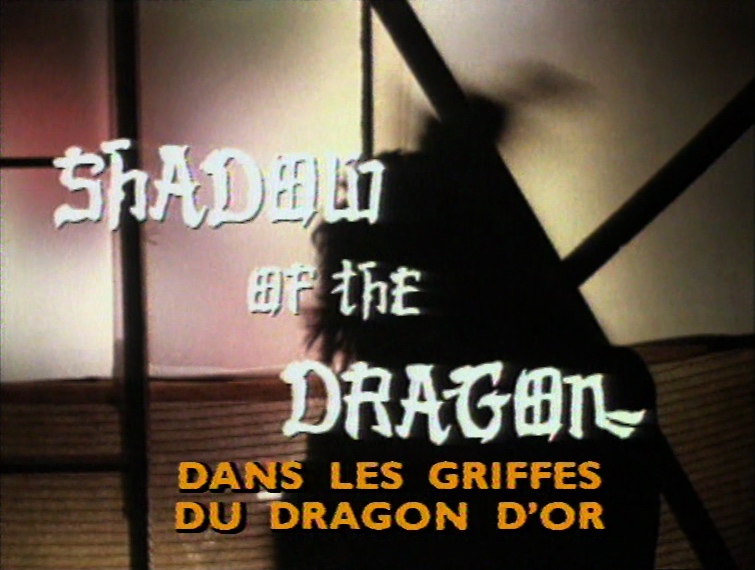
"Shadow of the Dragon": a motion picture (indirectly) brought to you by the NASA!
Your friend Sandy Palm was also co-producing and acting in Shadow of the Dragon. Could you tell us a bit about him?
Sandy Palm was a brillant guy. Have you ever heard of the Mensa group? Mensa is a group for very high IQ people. You have to have an IQ of over 180 to be in that group, it’s all over the world. We were members there together and became good friends. He was a stage person, and a very good stage manager. I asked him how he’d like to work in movies and he said he would, so I told him to be a UPM (unit production manager) for movies, which he was very good at. He loved to act as well, so I gave him a few parts. He wasn’t a great actor, but he was a good friend though. He passed away a few years ago. He was on dialysis, and it came to a point where the dialysis didn’t work… and that was it.
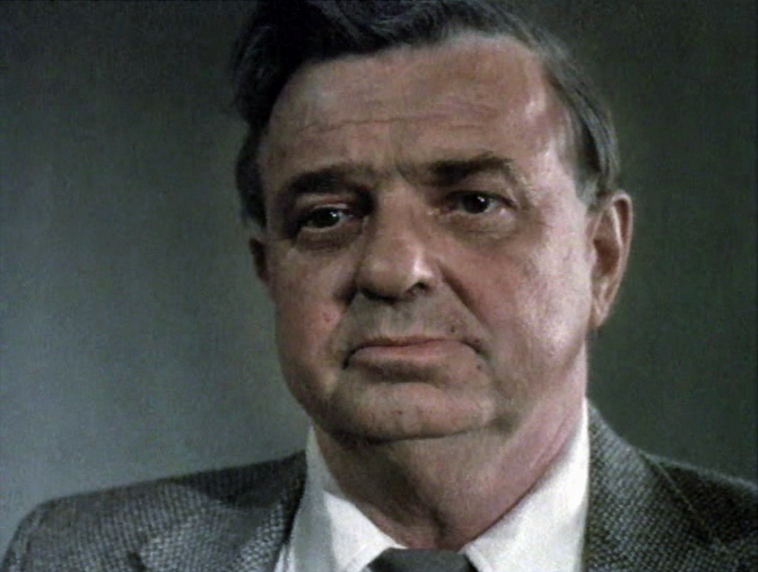
Would you have any funny anecdotes to share about the shooting?
Oh gosh, there was many! We had a lot of fun during the making of this movie, and how we got to do things. For example, the Vietnam sequence was actually shot in a town down here called Corona, and there was this huge paintball facility. On a standard day, you could see guys running on, shooting paint balls at each others. So in order to shoot our sequence, we actually had to paint the trees, to get all these yellow and red marks off it, and get it back looking like Vietnam!
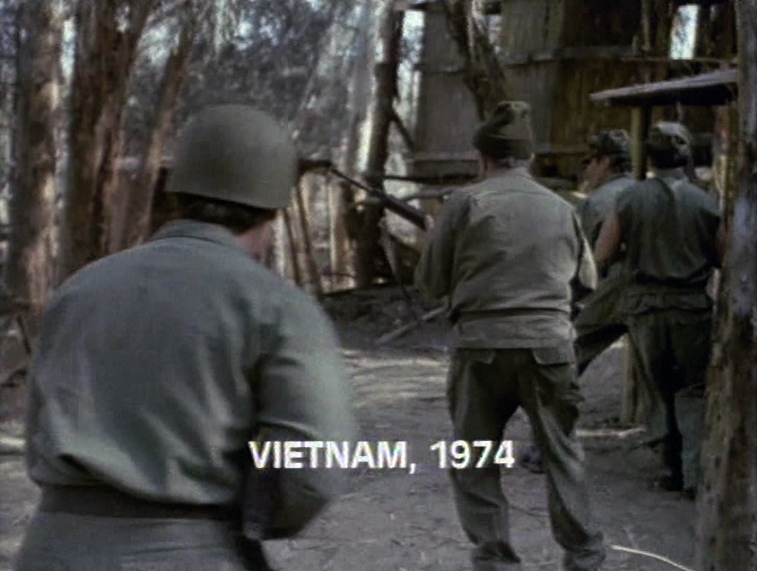
Do you remember the Vietnam sequence by night? When me and Sandy Palm were lying on the ground, and we sent Bill Smith off to get help? Well, the area where we were lying on the ground in, used to be swamp, it used to be under water for years. We didn’t know that, and we both caught bugs while we were lying on the ground. One of which I still take medication today, to keep it in check.
Please, tell us a bit about William Smith…
Bill Smith went through terrible things during that picture. At the end of this sequence in Vietnam, when the bomb underground exploded and sent Bill Smith mewling, it was in fact sort of a real bomb, unfortunately! The Special Effects guy had planted a tube filled with explosive in the ground, with just the sward on top of it, so this way it was just gonna blow a little bit. But while the crew was setting up, they kept kicking dirt into it, and clamped it down to the point where it actually became a dangerous bomb, so when that thing blew, Bill Smith really got thrown.
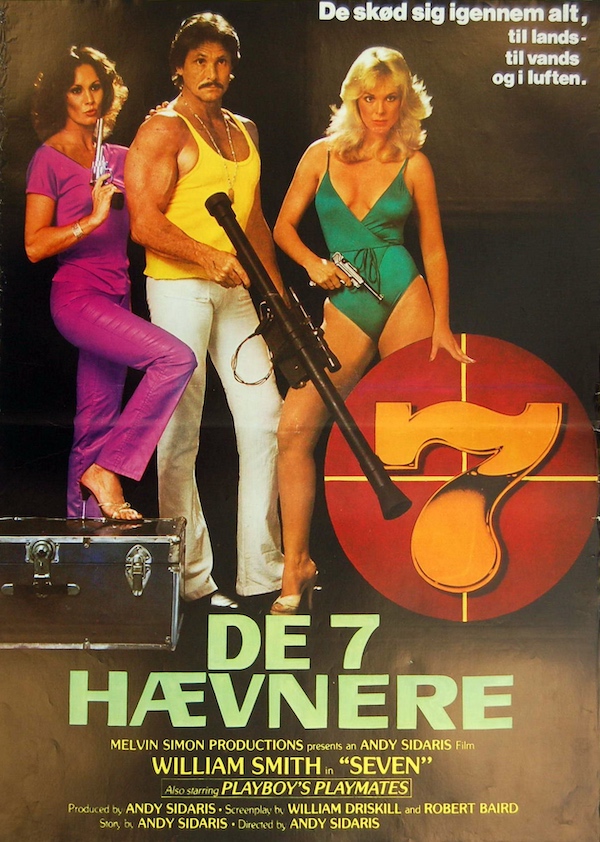
William Smith, the epitome of manhood.
He also got that snake that he had in the terrarium next to him bit him twice. And he told the snake owner: « if it bites me one more time you’re gonna have this dead snake on your hands. » Oh he was pissed, really ! But he was a wonderful guy. If he’d signed on to do your picture, he would go through hell, I mean, I saw him work for 18 hours in a raw, going through terrible stuff… he would do it, never complained. He was as tough as he had to be in the movies, but in real life he was a really sweet and well-loved man, a real nice guy. I have his book right on my table here, he wrote wonderful poetry, drew great cartoons, his poetry was a lot about military or cowboys. And he was terribly strong, he actually held records in weightlifting, like he did reverse curls with more than his bodyweight, no one’s ever done that. He now resides in the Motion Picture Home [Nanarland: a retirement place managed by a charitable organization that offers assistance and care to those in the motion picture and television industries and their families with limited or no resources], and we have a birthday party for him every year.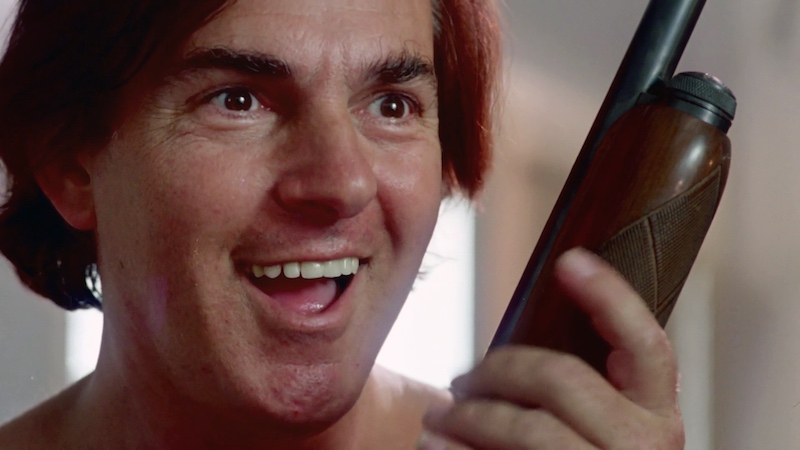
What about Gerald Okamura?
Gerald Okamura, to me, is one of the best stunt coordinators in the business when it comes to martial arts. Most of the real martial artists don’t know how do to martial arts in the movies, because it’s two different things: the pace, the exaggerated movements etc. But Gerald does, he’s both a good martial artist and a good fight choreographer. And he’s quite a good actor on top of it.
And the late Robert Z’Dar?
Bobby Z’Dar was a good guy. The last couple of years was really rough on him. His weight had wound up terribly. In fact if you look online at some of the last pictures of him, his face blew up to such a point... I mean... it was really grotesque. But he was still willing to work. One room for a picture? He would show up and do it! He was a good actor, we'd done several pictures together before Shadow of the Dragon...
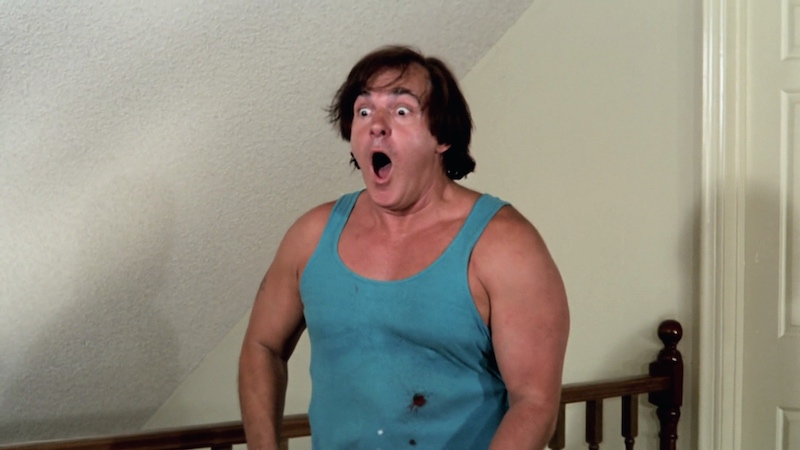
Jimmy, chewing the scenery in Amir Shervan's "Killing American Style" (1988).
Right, you were both in Samurai Cop and Killing American Style, directed by Amir Shervan. Speaking of, how do you remember him?
I knew him very well, he spent half of his time in my house! I helped him produce all of his pictures, except Gypsy, I had nothing to do with that one. But the rest of his pictures – Hollywood Cop, Young Rebels, Killing American Style [Nanarland: in which Sandy Palms plays a part too] and Samurai Cop – I sort of produced with him. Samurai Cop was a terrible movie, and they’re making Samurai Cop 2 now! I have a part in it.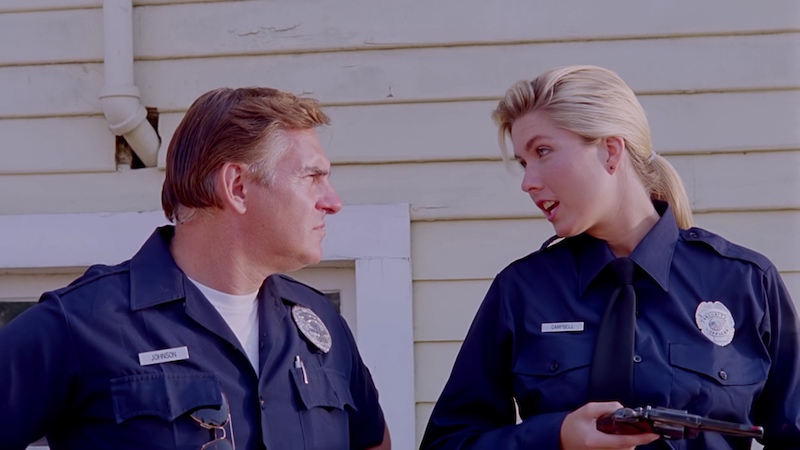 Jimmy Williams and Melissa Moore in "Samurai Cop" (1991).
Jimmy Williams and Melissa Moore in "Samurai Cop" (1991).
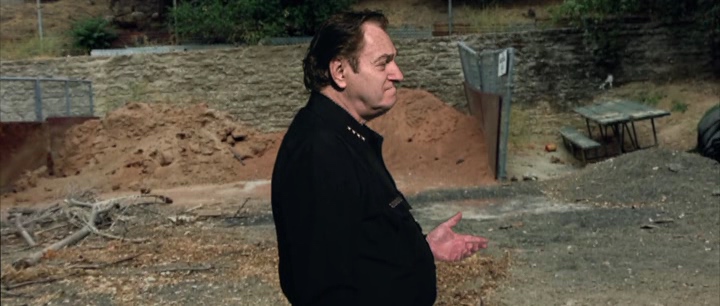
Jimmy in the very lame "Samurai Cop 2: Deadly Vengeance" (2015).
It took them forever to get the money to get this started, and finally shooting it, and sadly Bobby Z’Dar just passed away. They were supposed to shoot his scenes, he committed to it, but now he's dead and tomorrow we have a memorial service for him, here in town. [Nanarland: this interview was made in April 2015, just a few days after Robert Z'Dar died].
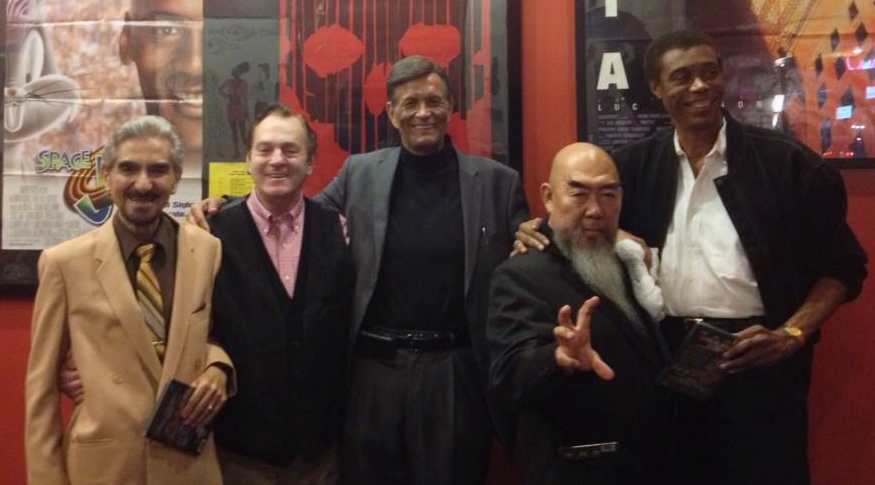
Photo taken May 31 2013, in front of the Nuart Theatre, Los Angeles, for the screening of Amir Shervan’s "Samurai Cop", with cast and crew members. From left to right: director of photography Peter Palian, Jimmy Williams, Douglas Dunning (Cinema Epoch's Director of Acquisitions, who distributes the film), Gerald Okamura and Mark Frazer (Source: viewerdiscretionadvised.net).
What do you do now?
My wife and I, we own a Cop Prop Shop, and a larger props and wardrobe house in Los Angeles. My wife, Tereza Nelson, has been in the movie & TV business for quite a long time. She started her career in Russia and in Armenia, she’s done the makeup in over 200 pictures all over the world, and even won a few awards. We notably did the wardrobe for Red Tails (2012), produced by George Lucas, about the Black pilots in WWII, it’s been running on HBO. We also worked for the TV series 30 Rock, shot at the Rockefeller Center in New York, and other TV shows for NBC and Universal. Recently, we supplied 40 Hong Kong police uniforms for the pilot episode of the TV series Rush Hour, based on the Rush Hour franchise. Here in Los Angeles we have the History Channel, the Discovery channel, we supply most of the stuff for them. And right now I’m doing much WWII German uniforms for a picture. Our uniforms are real, we don’t make costumes, our German uniforms are actually from Germany, there’s a big distributor there that we get all that from. We just do armies from all over the world. So we supply uniforms and guns, that keeps us busy, and I’m still able to work as an associate or executive producer on a couple of movies a year, and act as well.
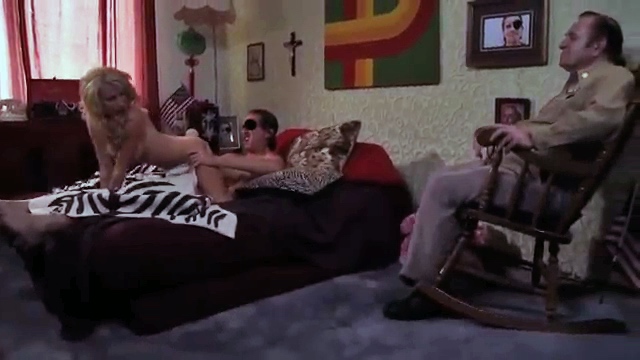
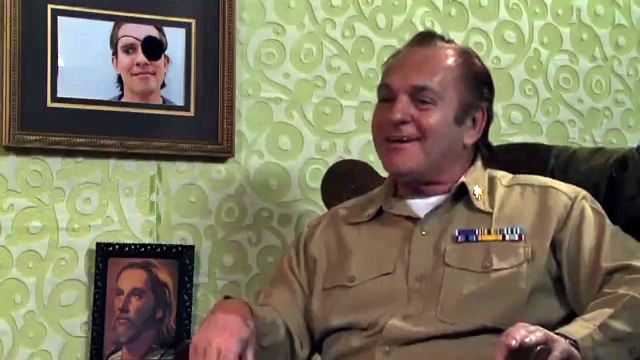
In the not very subtile"Poolboy: Drowning Out the Fury" (2011) – in which Danny "Machete" Trejo faces Kevin "Kull" Sorbo – Jimmy is associate producer and plays a lecherous grandpa leering at his grand daughter and her boyfriend having sex… (funny???)

